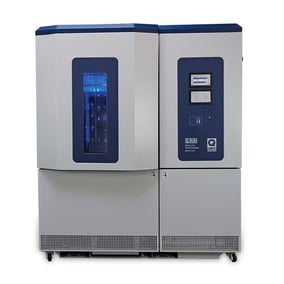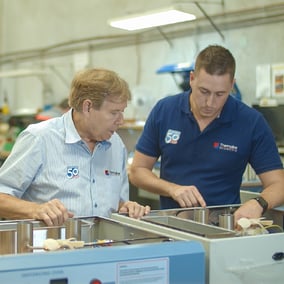Creating homemade yoghurt can be a rewarding and delicious way to enjoy a nutritious snack. Getting the incubation temperature just right is crucial for achieving that perfect texture and tangy flavour. This guide will help you understand the ideal temperature range for yoghurt incubation and why it's essential for the fermentation process.

Why Temperature Matters
The process of making yoghurt involves fermenting milk with specific bacterial cultures, primarily Lactobacillus bulgaricus and Streptococcus thermophilus. These cultures are heat-loving, meaning they thrive at higher temperatures. Proper incubation ensures that these bacteria multiply effectively, transforming the milk into yoghurt through the fermentation process. If the temperature is too high or too low, the bacteria's activity can be inhibited, resulting in poor texture and flavour.
Optimal Temperature Range
The ideal temperature for yoghurt incubation is between 43°C to 46°C. The use of a suitable incubator with highly accurate temperature control and temperature uniformity is critical for several reasons:
- Bacterial Growth: At this temperature, the yoghurt cultures are most active, efficiently converting lactose in the milk into lactic acid. This process thickens the milk and gives yoghurt its characteristic tangy taste.
- Consistency: A stable temperature helps ensure that the yoghurt sets properly. Fluctuations can lead to uneven fermentation, resulting in a runny or grainy texture.
- Safety: Keeping the yoghurt at the correct temperature prevents the growth of unwanted bacteria, ensuring your homemade yoghurt is safe to eat.
Steps to Incubate Yoghurt
- Heat the Milk: Start by heating your milk to around 82°C to denature the proteins. This step helps create a thicker yoghurt.
- Cool the Milk: Let the milk cool down to the incubation temperature range (43°C to 46°C). You can speed up this process by placing the pot of milk in a sink filled with cold water or a refrigerated .
- Add the Cultures: Once the milk is at the right temperature, add your yoghurt starter cultures. You can use a few tablespoons of store-bought yoghurt with live cultures or a powdered starter.
- Incubate: Pour the mixture into clean jars and place them in your incubator. Maintain the temperature between 43°C to 46°C for 4-12 hours, depending on your preferred tartness. The longer it incubates, the tangier the yoghurt will be.
- Chill and Store: After incubation, refrigerate the yoghurt for at least 2 hours to help it set further and improve texture.
Incubation Methods
- Yoghurt Maker: A yoghurt maker is designed to keep the mixture at a constant temperature, making it a convenient option.
- Incubator: An incubator can often maintain the needed temperature.
- Slow Cooker: Some slow cookers have a yoghurt setting, or you can use the warm setting to keep the temperature steady.
- Insulated Cooler: Place jars of the yoghurt mixture in a cooler with warm water (43°C to 46°C) to maintain the temperature.
Troubleshooting Tips
- Runny Yoghurt: Ensure your incubation temperature is within the optimal range. Extend the incubation time if needed.
- Grainy Texture: This can result from overheating. Use a thermometer to monitor and maintain the correct temperature.
- Sour Taste: Incubating for too long can make yoghurt overly tangy. Reduce the incubation time for a milder flavour.
Conclusion
Making yoghurt at home is a simple yet precise process that hinges on maintaining the right temperature. By keeping your incubation environment within the ideal range of 43°C to 46°C, you ensure the bacteria work efficiently to produce delicious, thick, and tangy yoghurt. Experiment with different incubation times to find the perfect balance for your taste preferences, and enjoy the benefits of homemade yoghurt tailored to your liking.






